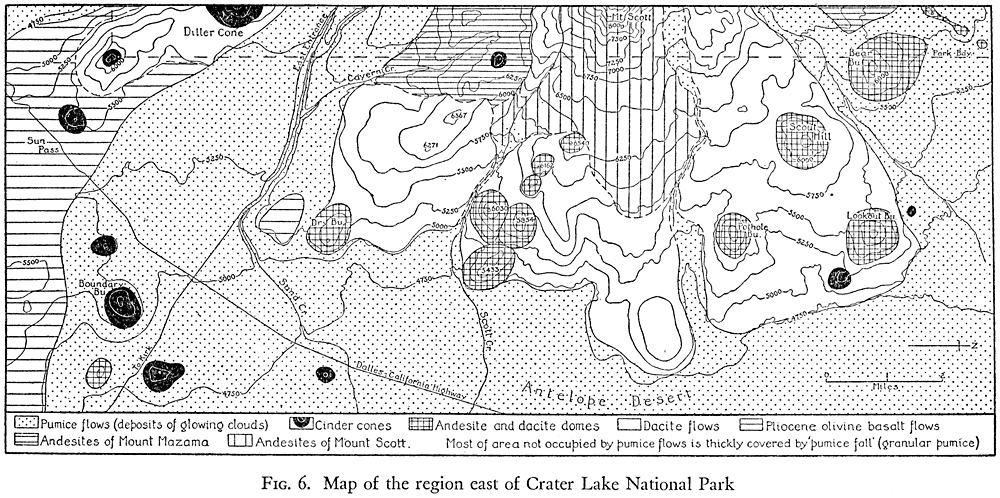The Geology of Crater Lake National Park, Oregon With a reconnaissance of the Cascade Range southward to Mount Shasta by Howell Williams
The Parasitic Scoria Cones of Mount Mazama
The Younger Cones
Cones outside the Park
In the flat country to the northeast and southeast of Mount Mazama there are several scoria cones of approximately the same age as those just described. Probably they were fed from a common magma chamber. Of these the largest is Boundary Butte, a craterless cone 650 feet high, almost completely covered with pumice. Slightly more than a mile to the northeast is a second craterless cone, 350 feet high, made up of black scoria, including bombs up to 6 feet in length, agglutinate, and lava. Between these two basaltic cones lies a small dome of dacite, presumably of about the same age. A third cone of scoria, surmounted by stubby flows of olivine basalt, forms 5503 Hill between Boundary Butte and the Dalles-California highway (figure 6). A fourth cone lies a short distance west of Sun Pass, probably on a radial fissure cutting the flanks of Mount Mazama, for the line which connects it with the southeast corner cone and Diller Cone would, if prolonged, pass approximately through the center of Crater Lake.
In the depression between the opposing slopes of Mounts Mazama and Thielsen, there are four small scoria and lava-scoria cones, of which the largest, Welsh Butte, is approximately 250 feet high.
Finally, a basaltic cone may be seen perched on a platform of dacite close to the dome of Lookout Butte. Although most of it is heavily mantled with pumice, there are many outcrops of massive and slaggy, olivine-rich basaltic lava about the summit, and fragments of red scoria are not rare on the lower slopes. The occurrence of such ejecta at this point is of especial interest inasmuch as it indicates that basalt and dacite were erupted either simultaneously or in rapid succession from vents in close proximity. It serves again to emphasize the fact that the final stages of activity at Mount Mazama were characterized by the emission of magmas of widely different composition.
***previous*** — ***next***


